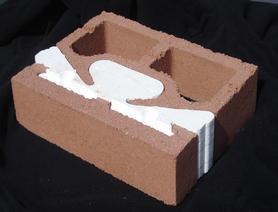I have over 40 years experience in the production of masonry units (domestically and internationally) and have seen hundreds of different concepts for insulation methods/materials and even the basic masonry units.
Calculations of "U" values and "R" values of walls and single units are rampant in the claims. It is a shame to see the values based on singular method of calculating when there is no single method recommended by the NCMA, but just listed as a possible method depending on the results desired by the organization making the claims.
It is similar to the claims made by other organizations that say you get an R19 wall when you are just using R19 insulation in a part of the wall when there may also be significant heat loss through the "structural" framing.
Unfortunately, the insulation claims are rampant in the business of supplying all materials for a wall.
The engineering of the wall can be a basic problem. Different aggregates can be used in the masonry units and still get the required structural strength. All it takes is simple adjustment to the mix design if you are using good aggregates.
I hope the proprietary masonry units proposed were tested in a 2 block high masonry hollow prism that is referred to in the ACI 530 design standards for engineered masonry. - The grout in the walls does little to compressive strength of the wall, since the masonry units control the f'm used in the structural design. - Was there a 2 block prism test conducted on the proprietary shaped units?
Also, a actual guarded hot-box test results on the block and inserts should be made available rather than a questionable calculation based on some thermal assumptions.
We were able to get an f'm of well over 3000 psi with lightweight aggregates. Some of the exotic specialized shapes are costly to lay because of weight and configurations and the need for additional labor for inserting inserts.
A simple 8x8x16 CMU with 2 webs at 8" on center provides perfectly alighted webs and face shells with cores that can be reinforced at 16", 24" or 32" on center with easier grouting and more reliable construction. Depending on the location they can be available in 8", 10" or 12" wall thicknesses. There are different types of bulk insulation materials that can be used periodically as the wall is built up.
I hope this describes an option for your structural design since this was considered when the ACI 530 was first written.
Dick
Engineer and international traveler interested in construction techniques, problems and proper design.

